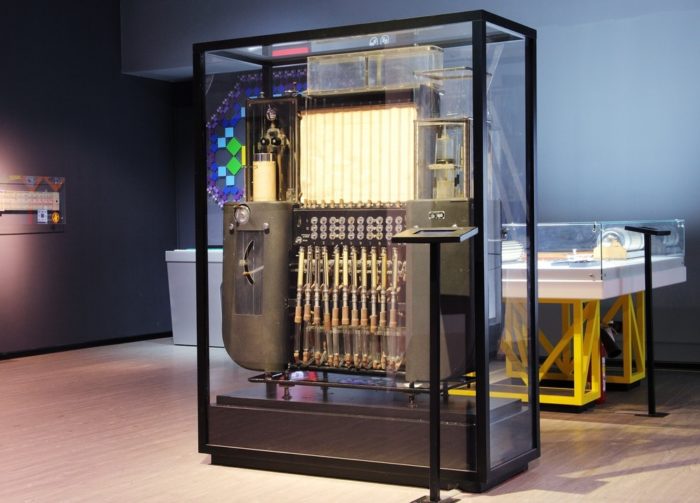In the world of technological advancements, few stories are as captivating as that of the 1936 water-powered computer. While this concept may sound like something out of a science fiction novel, it represents a remarkable chapter in computing history, showcasing innovation and ambition during an era when computers were still in their infancy.
Setting the Stage: A Technological Revolution
To truly appreciate the significance of the water-powered computer, it is essential to understand the context of its creation. The year 1936 was marked by rapid technological evolution, yet the idea of electronic computing was still in its formative stages. Early computers, many of which were developed during World War II, were characterized by mechanical components and bulky, energy-intensive systems. A critical challenge of this period was cooling these machines, as excessive heat often compromised their performance and longevity.
The water-powered computer emerged as an inventive solution to this overheating problem, marking a bold step toward more efficient and sustainable computing technologies. It was not merely a novelty; it was an early exploration into alternative methods of temperature management in computing systems.
The Innovative Design Behind the Concept
At the core of the 1936 water-powered computer was a sophisticated cooling mechanism that utilized water to regulate temperature effectively. This innovative design was a departure from the loud, energy-consuming fans commonly used in computers of that era. By employing a water-based cooling system, the machine offered a quieter, more efficient means of managing heat generated by its electronic components.
The water circulation process was ingeniously crafted. Water flowed through specially designed channels within the computer’s casing, absorbing heat directly from the components before carrying it away. This method not only reduced noise but also enhanced the overall reliability of the machine by addressing the prevalent issue of overheating—a frequent concern for early computing hardware.
Navigating Challenges and Innovations
Despite its forward-thinking approach, the water-powered computer was not without its challenges. One of the primary hurdles was ensuring the cooling system’s integrity. Any leaks or malfunctions could have catastrophic consequences for the internal components, making reliability a top priority. Furthermore, maintaining the water circulation system added layers of complexity to the overall operation, necessitating regular upkeep and monitoring.
Nonetheless, the existence of this pioneering device was a testament to the creativity and problem-solving capabilities of its creators. It signified a significant shift in how engineers began to conceptualize computing technology, demonstrating an early recognition of the need for efficient thermal management.
The Legacy of the Water-Powered Computer
The impact of the 1936 water-powered computer extends well beyond its immediate technological achievements. It laid the groundwork for future advancements in cooling technologies, which are now standard practice in high-performance computing systems, including gaming setups and data centers.
Today’s sophisticated water cooling systems have evolved considerably from their predecessors, incorporating advanced materials and innovative designs that enhance efficiency and reliability. The fundamental principle of using liquid to manage heat, first explored in this 1936 machine, has become integral to contemporary computing practices, underscoring the enduring influence of early innovations.
Reflections on the Spirit of Innovation
The tale of the water-powered computer is a fascinating chapter in the broader narrative of technological progress. It serves as a reminder that early engineers and inventors were not solely focused on immediate problems; they were also laying the groundwork for future advancements. Their willingness to experiment with unconventional ideas and technologies paved the way for the remarkable progress seen in today’s computing landscape.
Looking back at these early innovations allows us to appreciate the incredible strides made in technology. From the rudimentary water-powered systems of the past to today’s sleek, cutting-edge devices, each advancement reflects human ingenuity and the relentless quest for progress.
Conclusion: A Symbol of Innovation
In summary, the 1936 water-powered computer transcended its role as a mere technological curiosity; it stands as a powerful symbol of innovation. This pioneering device not only showcased the possibilities of water-based cooling systems but also foreshadowed the advanced technologies we now take for granted. It is a reminder that even the most daunting challenges can yield groundbreaking solutions, inspiring us to continue exploring the boundaries of what is achievable.
As you marvel at the elegant designs of modern computers, remember the trailblazing spirit of the early innovators who transformed simple concepts into significant technological advancements. Their legacy lives on in every whisper-quiet, high-performance machine we rely on today.
Engaging with the Past
Reflecting on the journey of the water-powered computer invites us to consider the broader implications of technological innovation. What lessons can we learn from these early pioneers? How can we continue to push the envelope in technology while honoring the foundational work that came before us?
In our quest for progress, let us not forget the importance of curiosity, creativity, and collaboration—traits that define both the early days of computing and the future of technology. As we advance further into the digital age, the story of the 1936 water-powered computer serves as a beacon, guiding us toward continued innovation and inspiring future generations of engineers and inventors to dream big.
